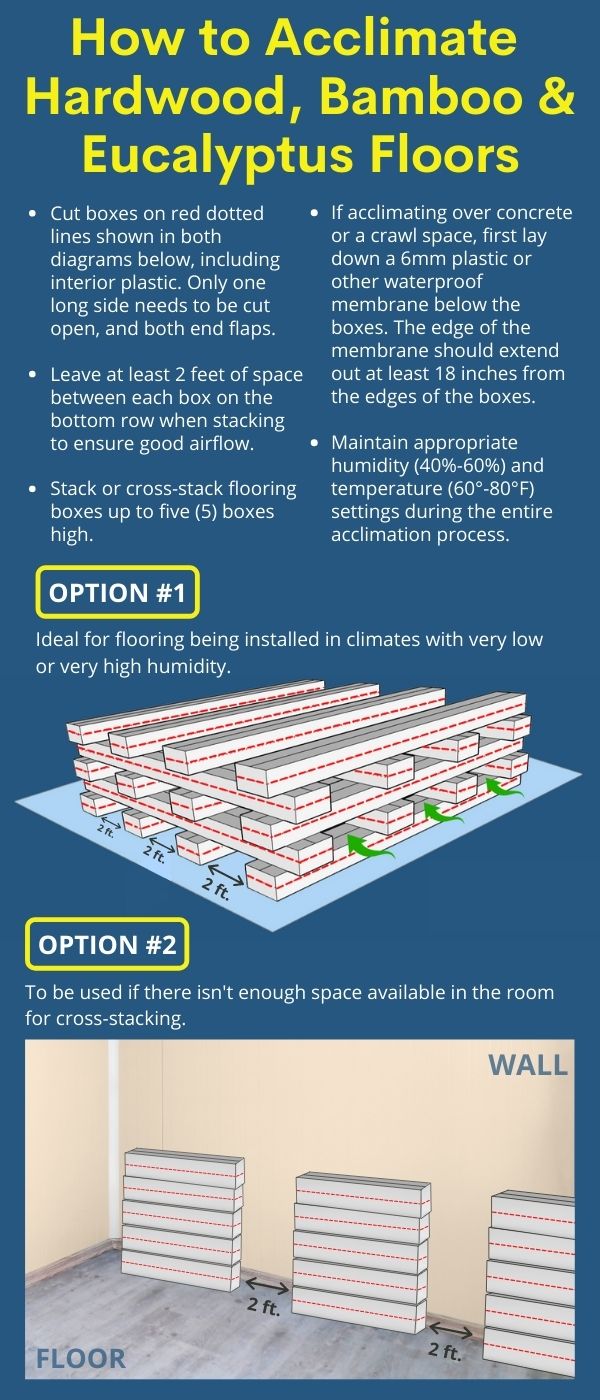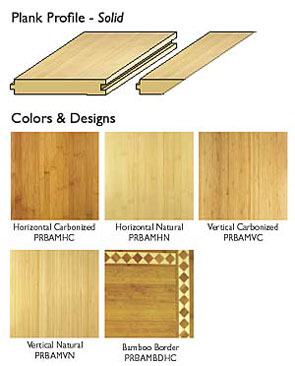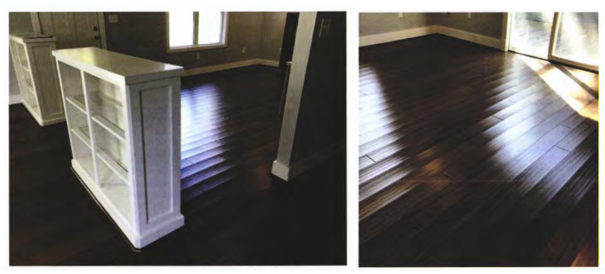Essential Steps for Installing Morning Star Bamboo Flooring
Before you embark on the installation of Morning Star Bamboo Flooring, it is crucial to prepare the space properly. Below are the essential steps to ensure a successful installation process.
- Measure and Plan: Before purchasing the flooring, measure the area where you intend to install it. Take accurate measurements to determine the quantity of flooring required. Create a layout plan to visualize how the flooring will fit in the space.
- Acclimate the Flooring: Morning Star Bamboo Flooring needs to acclimate to the room’s temperature and humidity levels before installation. Place the unopened boxes of flooring in the room for at least 72 hours. This will allow the bamboo to adjust to the environment, minimizing the risk of expansion or contraction after installation.
- Prepare the Subfloor: Ensure that the subfloor is clean, dry, and level. Remove any existing flooring, carpet, or debris. Repair any cracks or uneven areas. A smooth and level subfloor is crucial for a seamless installation.
- Moisture Barrier: Install a moisture barrier, such as a vapor barrier or underlayment, to protect the bamboo flooring from moisture seepage. This is particularly important for installations on concrete subfloors or in areas prone to moisture, such as basements or bathrooms.
- Check for Moisture Content: Use a moisture meter to check the moisture content of the subfloor and the bamboo flooring. Ensure that both are within the recommended range specified by the manufacturer. High moisture levels can lead to warping or damage to the flooring.

Tools and Materials
To successfully install Morning Star Bamboo Flooring, you need to have the right tools and materials at your disposal. Here is a comprehensive list of everything you’ll need for a smooth installation process.
Measuring Tools:
- Tape measure: Used to measure the dimensions of the room and the flooring.
- Speed square: Helps in making accurate cuts and marking straight lines.
Cutting Tools:
- Circular saw or miter saw: Essential for cutting the bamboo flooring to fit around walls and obstacles.
- Jigsaw: Useful for intricate cuts, such as around door frames or vents.
Installation Tools:
- Flooring nailer or stapler: Used to secure the flooring to the subfloor.
- Hammer and nail set: For manually driving nails or fixing any loose boards.
- Pry bar: Helps in removing baseboards or trim for a neat installation.
- Tapping block and rubber mallet: Used to tap the flooring into place without causing damage.
Safety Equipment:
- Safety glasses: Protects your eyes from debris and dust.
- Dust mask or respirator: Guards against inhaling dust particles.
- Knee pads: Provides comfort and protection when working on your knees.
Materials:
- Morning Star Bamboo Flooring: Purchase the desired quantity based on your measurements.
- Underlayment or vapor barrier: Provides moisture protection and sound insulation.
- Nails or staples: Required for securing the flooring.
- Moisture meter: Allows you to check the moisture content of the subfloor and the bamboo flooring.
Step-by-Step Installation Guide
Installing Morning Star Bamboo Flooring requires careful attention to detail and following the correct steps. Here is a step-by-step guide to ensure a successful installation process.
- Start with a Clean and Level Subfloor: Ensure that the subfloor is clean, dry, and level, as mentioned in the previous article. This step is crucial for a seamless installation.
- Lay the Moisture Barrier: If required, install the moisture barrier or underlayment according to the manufacturer’s instructions. This will provide added protection against moisture and create a smooth surface for the flooring.
- Begin the First Row: Start by laying the first row of flooring along the longest wall of the room. Place spacers between the flooring and the wall to allow for expansion. Remember to leave a 1/2-inch gap around the perimeter of the room.
- Install the Remaining Rows: Continue installing the flooring, row by row, interlocking the planks using the manufacturer’s recommended installation method. Ensure that the boards are snugly fit together and that the joints are staggered for a visually appealing result.
- Cut and Trim: As you reach the end of each row, you may need to cut the last plank to fit. Use a circular saw or miter saw to make accurate cuts. Remember to leave a 1/2-inch gap at the end of each row for expansion.
- Nail or Staple the Flooring: Once the rows are in place, use a flooring nailer or stapler to secure the planks to the subfloor. Follow the manufacturer’s guidelines for the proper placement of nails or staples.
- Repeat the Process: Continue installing the flooring row by row until you reach the opposite wall. Make sure to maintain the 1/2-inch gap around the perimeter and between the flooring and any fixed objects.
- Install Baseboards and Trim: After the flooring is installed, reinstall the baseboards or install new ones to cover the expansion gap. Use a nail gun or finish nails to secure the trim in place.
Tips and Tricks for a Flawless Finish
To achieve a flawless finish when installing Morning Star Bamboo Flooring, it’s essential to pay attention to the details and employ some expert tips and tricks. Below are some valuable advice to ensure a professional-looking result.
Plan the Layout: Before starting the installation, carefully plan the layout of the flooring. Consider the direction of natural light and how it will interact with the planks. It’s generally recommended to install the planks parallel to the longest wall in the room for a visually appealing result.
Mix Planks from Different Boxes: Bamboo flooring, like any natural material, can have slight variations in color and grain pattern. To achieve a more uniform look, mix planks from different boxes as you install them. This will help distribute any variations more evenly throughout the floor.
Use a Tapping Block and Mallet: When interlocking the planks, use a tapping block and rubber mallet to ensure a tight fit. This will help prevent gaps and ensure a smooth transition between the planks.
Check for Levelness: Regularly check the levelness of the flooring as you install it. Use a straightedge or level to identify any high or low spots. Sand down any high spots or use a leveling compound to fill in any low spots.
Clean as You Go: Throughout the installation process, clean up any excess adhesive or debris immediately. This will prevent it from drying and becoming difficult to remove later. A clean workspace will also help you maintain a professional-looking finish.
Allow for Expansion: Remember to leave the recommended expansion gap around the perimeter of the room and between the flooring and any fixed objects. This gap allows the bamboo flooring to expand and contract naturally with changes in temperature and humidity.
Maintenance and Care
Proper maintenance and care are essential to keep your Morning Star Bamboo Flooring looking beautiful and ensuring its longevity. Here are some valuable tips on how to maintain and care for your bamboo flooring.
Regular Cleaning: Sweep or vacuum your bamboo flooring regularly to remove dirt, dust, and debris. Avoid using abrasive brushes or cleaners that can scratch the surface. For deeper cleaning, use a damp mop with a pH-neutral bamboo floor cleaner recommended by the manufacturer.
Avoid Moisture: Bamboo flooring is susceptible to moisture damage, so ensure that spills are promptly cleaned up. Avoid excessive moisture by using mats at entryways and in high-traffic areas. Do not use steam mops or wet mops on your bamboo flooring.
Protect from Furniture: Place protective pads or felt under furniture legs to prevent scratches and dents. When moving heavy furniture, use furniture sliders to avoid dragging it across the floor.
Control Humidity Levels: Maintain a consistent humidity level in the room where the bamboo flooring is installed. Extreme humidity can cause the planks to expand or contract. Use a humidifier or dehumidifier if necessary to keep the humidity within the recommended range.
Prevent Sun Damage: Direct sunlight can cause the bamboo flooring to fade or discolor over time. Use blinds, curtains, or UV-protective window films to prevent excessive exposure to sunlight. Rotate rugs and furniture periodically to avoid uneven fading.
Avoid Harsh Chemicals: Avoid using harsh cleaning agents, wax, or oil-based cleaners on your bamboo flooring. These can leave a residue or damage the protective finish. Stick to manufacturer-recommended cleaning products to maintain the floor’s appearance.
E710407.jpg
How to Install Bamboo – Teragren Drop Lock Strand Bamboo Floors.mp4
A Product Review: Morningstar Bamboo Click Floors
Morning Star Bamboo Flooring ideas bamboo flooring
Lumber Liquidators Faces Another Class Action Over Alleged Defects
Put this floor in my family room. It came out absolutely gorgeous
Related Posts:
- How Much Does It Cost To Install Bamboo Flooring
- Bamboo Flooring Designs
- Maintenance Of Bamboo Flooring
- Average Cost Of Bamboo Flooring
- Commercial Bamboo Flooring
- Modern Bamboo Flooring
- Hand Scraped Strand Woven Bamboo Flooring
- Carbonised Bamboo Flooring
- Bamboo Floor Care Maintenance
- Can Bamboo Flooring Be Used In A Bathroom?






